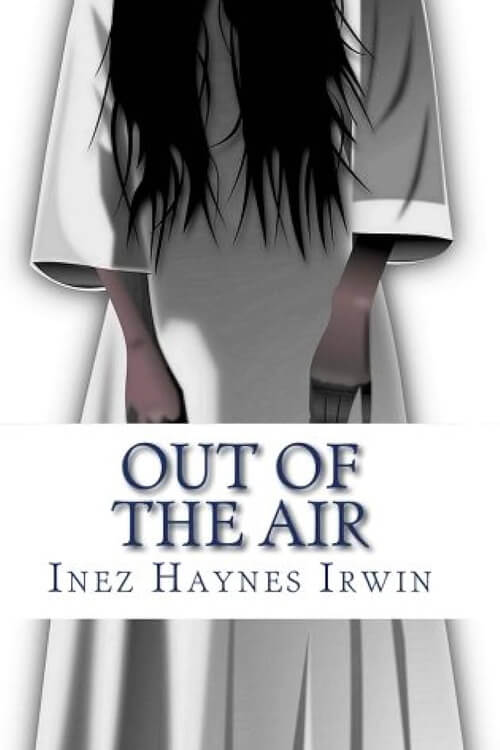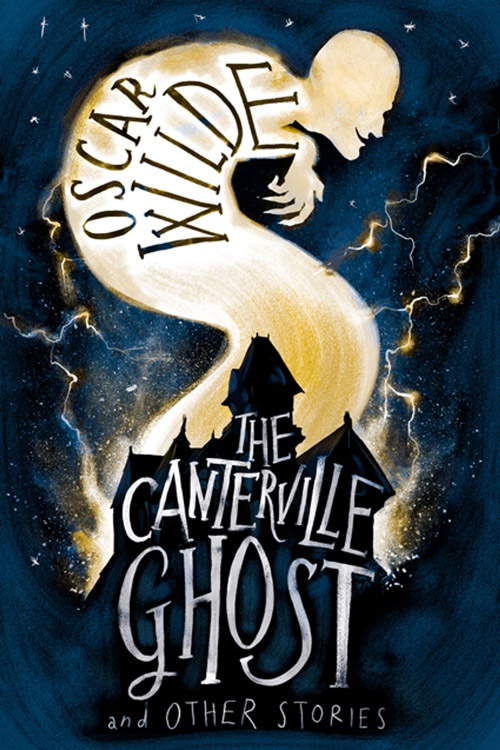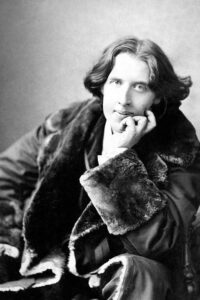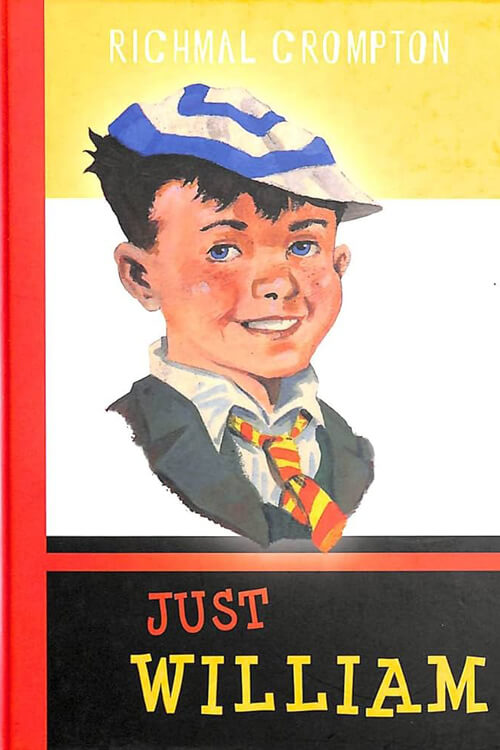
The Canterville Ghost
The American Minister to the Court of St James’s, Hiram B. Otis, and his family move into Canterville Chase, an English country house, despite warnings from Lord Canterville that the house is haunted. Mr Otis says he will take the furniture and the ghost at a valuation. The Otis family includes Mr. and Mrs. Otis, their eldest son Washington, their daughter Virginia, and the Otis twins. At first, none of the Otis family believes in ghosts, but shortly after they move in, none of them can deny the presence of Sir Simon de Canterville. Mrs Otis notices a mysterious bloodstain on the floor and comments, “She does not at all care for bloodstains in the living room” Mrs Umney, the housekeeper, tells her that the bloodstain is evidence of the ghost and cannot be removed.
Washington Otis, the eldest son, suggests removing the stain with Pinkerton’s Champion Stain Remover and Paragon Detergent. When the ghost makes his first appearance, Mr. Otis promptly gets out of bed and pragmatically offers the ghost Tammany Rising Sun Lubricator to oil his chains. Angrily, the ghost throws the bottle and runs into the corridor. The Otis twins throw pillows on him, and the ghost flees. The Otis family witnesses reappearing bloodstains on the floor just by the fireplace, which are removed every time they appear in various colours. Despite the ghost’s efforts and most gruesome guises, the family refuses to be frightened, leaving Sir Simon feeling increasingly helpless and humiliated. The Otises remain unconcerned. The ghost falls victim to tripwires, toy peashooters, butter slides, and falling buckets of water. The mischievous twins rig up their own “ghost”, which frightens him. Sir Simon sees that Virginia, the beautiful and wise fifteen-year-old daughter, is different from the rest of the family. He tells her he has not slept in three hundred years and desperately wants to do so.
The ghost tells her the tragic tale of his wife, Lady Eleanor de Canterville. Virginia listens to him and learns an important lesson: the true meaning behind a riddle. Sir Simon de Canterville says that she must weep for him, for he has no tears; she must pray for him, for he has no faith, and then she must accompany him to the Angel of Death and beg for Sir Simon’s death. She weeps for and prays for him and disappears with Sir Simon through wainscoting. She accompanies him to the Garden of Death and bids the ghost farewell. The story ends with Virginia marrying the Duke of Cheshire after they both come of age. Sir Simon, she tells her husband several years later, helped her understand what life is, what death signifies, and why love is more vital than both.
Read or download Book
Oscar Wilde
Oscar Wilde was born at 21 Westland Row, Dublin (now home of the Oscar Wilde Centre, Trinity College), the second of three children born to an Anglo-Irish couple: Jane, née Elgee, and Sir William Wilde.
Biography.
Oscar was two years younger than his brother, William (Willie) Wilde. Jane Wilde was a niece (by marriage) of the novelist, playwright, and clergyman Charles Maturin (1780–1824), who may have influenced her literary career. She mistakenly believed that she was of Italian ancestry, and under the pseudonym “Speranza” (the Italian word for ‘hope’), she wrote poetry for the revolutionary Young Irelanders in 1848; she was a lifelong Irish nationalist. Jane Wilde read the Young Irelanders’ poetry to Oscar and Willie, inculcating a love of these poets in her sons. Her interest in the neo-classical revival showed in the paintings and busts of ancient Greece and Rome in her home.
Sir William Wilde was Ireland’s leading oto-ophthalmologic (ear and eye) surgeon and was knighted in 1864 as medical adviser and assistant commissioner to the censuses of Ireland. He also wrote books about Irish archaeology and peasant folklore. A renowned philanthropist, his dispensary for caring for the city’s poor at the rear of Trinity College, Dublin (TCD), was the forerunner of the Dublin Eye and Ear Hospital, now located at Adelaide Road. On his father’s side, Wilde was descended from a Dutchman, Colonel de Wilde, who went to Ireland with King William of Orange’s invading army in 1690 and numerous Anglo-Irish ancestors.
On his mother’s side, Wilde’s ancestors included a bricklayer from County Durham, who emigrated to Ireland sometime in the 1770s. Wilde was baptized as an infant in St. Mark’s Church, Dublin, the local Church of Ireland (Anglican) church. When the church was closed, the records were moved to the nearby St. Ann’s Church, Dawson Street. Davis Coakley mentions a second baptism by a Catholic priest, Father Prideaux Fox, who befriended Oscar’s mother c. 1859. According to Fox’s testimony in Donahoe’s Magazine in 1905, Jane Wilde would visit his chapel in Glencree, County Wicklow, for Mass and take her sons with her. She asked Father Fox in this period to baptize her sons.






